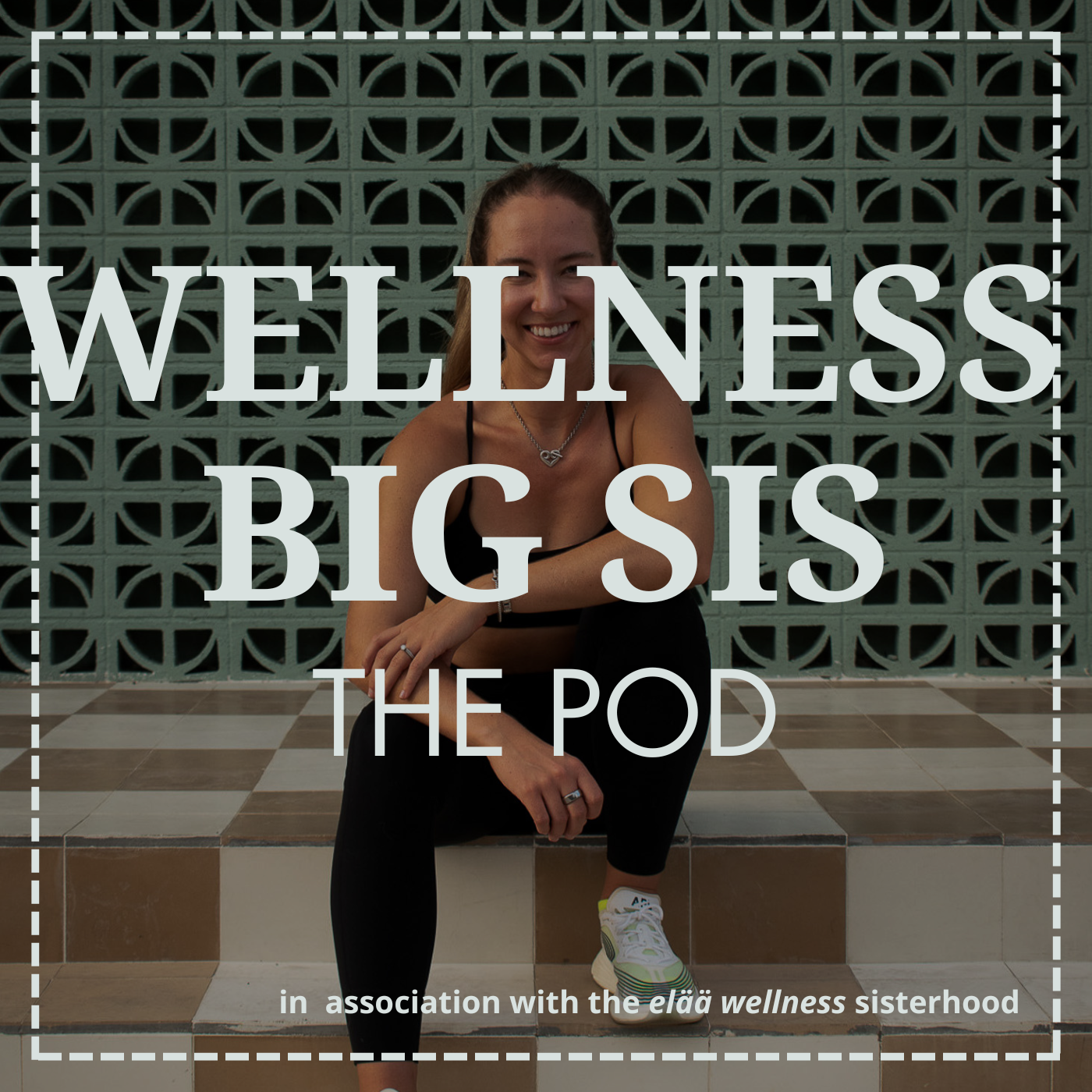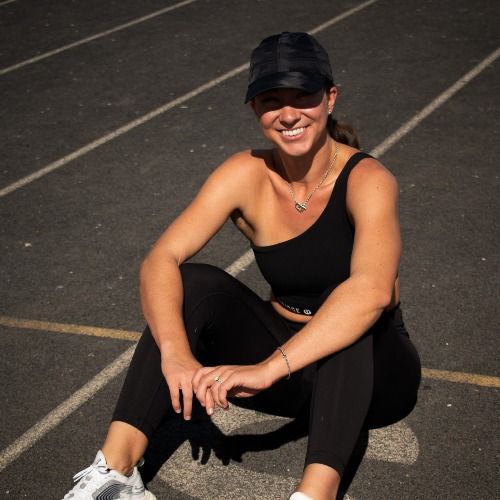hotter & smarter in 5:: the benefits of nasal breathing
Join us as we get hotter & smarter learning about the benefits of mouth taping! Mouth taping is trending right now, but what does it actually help? In this episode, we discuss the physiological and neurological benefits of nasal breathing compared to mouth breathing, especially as it relates to our posture, focus, reaction time, sleep, and pelvic floor health. Listen in to learn all things nasal breathing!
https://www.thoracrespract.org/pdf/68ab204c-182b-49da-b227-bc7efe058632/articles/ThoracResPract.2024.24061/2024-0061.pdf
loving the pod? click the follow button, & we'd love if you could leave a review!
website:: elaa-wellness.com
insta:: @dr.kelsyvickdpt & @elaa_wellness & @wellnessbigsispod
youtube:: @dr.kelsyvickdpt
tiktok:: @dr.kelsyvickdpt
sign up for the free wellness big sis newsletter!
sign up for our patreon for exclusive content & workouts!
00:00 - 00:24 Introduction to Nasal vs. Oral Breathing
00:25 - 01:12 Snatched Jawline and Breathing
01:13 - 01:48 Health Implications of Mouth Breathing
01:49 - 02:11 Categories of Nasal Breathing Benefits
02:12 - 02:23 Nasal Breathing and Sleep
02:24 - 04:02 Brain Benefits of Nasal Breathing
04:03 - 04:30 Respiratory and Postural Effects
Transcript
All the cool girls are mouth taping,
so let's get hotter and smarter in five
2
:as we chat about the benefits of nasal
breathing compared to oral breathing.
3
:So from a broad perspective, nasal
breathing helps with our facial oral and
4
:respiratory muscle function in addition
to our skeletal structure of the face.
5
:So when you hear about mouth
taping and nose breathing,
6
:helping your snatched jawline.
7
:This is what they're referring to.
8
:And in PT school, we actually
had a respiratory therapist
9
:come talk to us about nasal
breathing versus oral breathing.
10
:And he said when he's grocery
shopping, he can tell which people in
11
:the grocery line are mouth breathers
versus who are nasal breathers.
12
:Based on how their face is structured.
13
:And I'll try and put a picture of
what that actually looks like because
14
:once you see it, you can't unsee it.
15
:And then everyone you notice with this
pushed back jawline or this rounded
16
:curvature of the bottom half of their
face, you will know that they are likely
17
:, an oral breather or a mouth breather.
18
:So people who mouth, breathe or
oral breathe often get headaches.
19
:They often have alterations in head
position in order to clear those
20
:airways in order to get air through
their mouth, because that's their
21
:primary mode and choice for breathing.
22
:They are often more fatigued, drowsy.
23
:They have their mouth open during
sleep, which causes snoring.
24
:They can also have.
25
:Difficulty breathing at night and
nasal obstruction at night when they're
26
:sleeping, because , their head has to
be positioned in a certain way in order
27
:to clear the pathway for air to get
through the mouth rather than the nose.
28
:So I've broken it up
into a few categories on.
29
:Talking about the various benefits of
nasal breathing versus mouth breathing
30
:for things like sleep, respiration, brain
function, and ending on posture and pelvic
31
:floor health, because as y'all know,
that's where my expertise and passion
32
:lies when it comes to mouth breathing
versus nasal breathing, and why I try
33
:and promote mouth taping for everyone.
34
:So when it comes to sleep, nasal breathing
actually creates a lower risk for sleep
35
:apnea and a lower risk for upper airway
resistance during breathing, during
36
:sleep, which means overall less snoring.
37
:A lot of the brain benefits of
nasal breathing compared to mouth
38
:breathing come based on how much
oxygen we're able to deliver to
39
:very important parts of the brain.
40
:So evidence suggests that mouth breathing
may be associated with an increased
41
:risk of impaired brain function.
42
:Due to lower oxygen saturation,
and that's the amount of hemoglobin
43
:that our blood carries, that
carries those oxygen molecules to
44
:the necessary parts of the brain.
45
:So this has been further
confirmed by multiple studies.
46
:So there's FMRI studies that have
found that mouth breathing has led
47
:to impairments in working memory.
48
:So there was increased neural activity
during working tasks in nasal breathers
49
:when we're working on a tough project,
when we're needing a lot of that
50
:mental effort, nasal breathers showed
increased neural activity when they
51
:were actually working on that task
compared to mouth breathers, FMRI.
52
:Studies have also found, that mouth
breathing has led to impairments in smell
53
:memory or olfactory memory, mathematical
abilities, learning skills, and
54
:they've also found that mouth breathing
showed lower blood oxygenation to.
55
:The hippocampus, brainstem, and cerebellum
56
:for children.
57
:Studies have also shown lower achievement
of academic skills in mouth breathers
58
:compared to nasal breathing children.
59
:EEG brain studies have shown that
mouth breathers had decreased
60
:theta and alpha waves at rest.
61
:And during various mental tasks
compared to nasal breathers.
62
:And nasal breathers have also shown
increased neural integrations for things
63
:like self-awareness and consciousness.
64
:And lastly, nasal breathers have
also shown improved reaction time to
65
:fearful stimuli, as well as increased
accuracy in visual object recognition.
66
:For respiration and breathing,
oxygen saturation and respiratory
67
:rates significantly decreased during
mouth breathing compared to nasal
68
:breathing, which might lead to
postural deficits we see for mouth
69
:breathers trying to get more oxygen.
70
:As we can see, a lot of it has to.
71
:To do with how much oxygen we're
actually able to get to muscles and
72
:then also to our brain and the pathways
that we're able to receive that oxygen
73
:either via the nose or via the mouth
74
:in order to successfully breathe.
75
:So lastly, when it comes to posture
and your pelvic floor goes into that,
76
:of course mouth breathers typically
have that forward head posture because
77
:, they're trying to shift their actual
structure in order to increase the
78
:amount of oxygen that they're able to
intake via their mouth, because that
79
:is their preferred way of breathing.
80
:So forward head posture, which
means they oftentimes have
81
:overuse of the neck muscles.
82
:A lot of people with neck pain.
83
:Will often be mouth breathers.
84
:This is a generalization, but we always
check how they're breathing in order to
85
:tell are they overusing some of those
neck muscles or are those neck muscles
86
:super tight because they're having to
position their head in such a way to
87
:breathe through their mouth, which is
the way that they prefer to breathe.
88
:Because of that forward head posture,
they also can have poor efficiency
89
:of their overall breathing muscles.
90
:So if you guys have listened to
our episodes before, you know that
91
:breathing a lot of the time is.
92
:Focused on the alignment of your rib
cage over your pelvic floor, how the
93
:diaphragm's able to descend, how the
pelvic floor is able to descend in order
94
:to create this like coordinating system
for respiration, for bowel movements,
95
:for a lot of different things within
that like thoracic and abdominal cavity.
96
:And if your head's forward, that's
automatically throwing the system
97
:off so you can have poor diaphragm
function and coordination in addition
98
:to poor pelvic floor function and
coordination, when your head's forward.
99
:That's typical of people
who mouth breathe.
100
:Mouth breathers are often also chest
breathers, meaning forward with the
101
:chest, and , using some of those
accessory breathing muscles rather
102
:than the primary breathing muscles
in order to accomplish that goal of
103
:respiration and getting enough oxygen.
104
:But with chest breathing, we're limiting
that expansion of the diaphragm.
105
:We're limiting that expansion of
the pelvic floor we're just having
106
:an overall poorer musculoskeletal.
107
:Coordination of respiration, that's
going to lead to things like possible
108
:neck pain, possible low back pain.
109
:So not only is it affecting the brain,
your working memory, your reaction
110
:time, but it's also affecting some
of the like physical symptoms that
111
:you're getting when it comes to pain.
112
:And then lastly, mouth breathers
often use those accessory breathing
113
:muscles more because , a lot of
the time that position is off.
114
:And so they're forced to use things
like their sternocleidomastoid,
115
:that really big muscle in the front.
116
:They're forced to use some of
these intercostals, that these
117
:accessory breathing muscles are
utilized during laughing and
118
:coughing and heavier, forceful.
119
:Tasks for breathing heavy exercise.
120
:It should not be your primary
way of breathing when it
121
:comes to breathing at rest.
122
:And people who mouth, breathe or oral
breathe oftentimes use these accessory
123
:muscles when they don't really have to.
124
:So that can create a lot of tension
in different areas that don't
125
:necessarily need to be having tension.
126
:So now we are all a little hotter
and smarter now that we know
127
:the benefits of nasal breathing
and how mouth tape can help.


